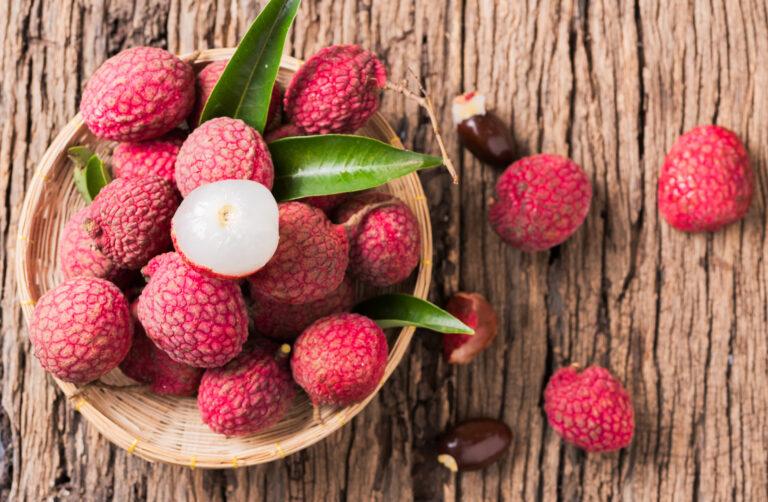Acute encephalitis syndrome (AES) is spreading among children in India's main litchi producing region. In the summer of 2019, another AES outbreak occurred in Bihar, India, with at least 650 people falling ill and more than 160 children dying of acute encephalitis, according to data.
AES can be caused by various microorganisms (e.g. viruses, bacteria, fungi, parasites), chemicals and toxins. AES mostly affects children under 15 years of age. In India, AES was mainly associated with the Japanese encephalitis virus (JEV) before 1975. JEV cases and epidemics have become more frequent, with endemic regions emerging. In the 2000s, the number of JEV cases and outbreaks decreased, while the proportion of AES cases caused by other viruses, including Chandipura virus (CHPV), Nipah virus (NiV) and enteroviruses increased. However, a proportion of cases could not be linked to these viruses.
A 2014 study suggested a link between lychee consumption and the spread of the disease. The study suggests that a local fruit, ackee, may be the cause of a disease similar to AES, which is also associated with an acute encephalopathy disease called Jamaican vomiting sickness (or toxic hypoglycaemic syndrome). A toxic substance, methylene cyclopropyl acetic acid (MCPA), also known as hypoglycine A, is present in unripe ackee fruits. The second name refers to its main property: the toxic substance causes a sharp drop in blood sugar. Since the brain needs a constant supply of glucose to function, a drop in blood sugar levels can cause inflammation. MCPA, or one of its metabolites (methylene cyclopropane acetyl CoA, MCPA-CoA), also affects the mitochondrial function of the liver by inhibiting the ß-oxidation of fatty acids.
They have also found that a lower analogue of hypoglycine A, methylene-cyclopropylglycine (MCPG), is found in lychee and also causes a drop in blood sugar levels. MCPG is found in the seeds of lychees, but its presence and quantity in lychee fruit has hardly been investigated. It is hypothesized that it may be present in higher concentrations in unripe fruit, like in the ackee fruit (up to 20x difference).
The researchers' suspicions were only strengthened by the regular AES outbreaks during the lychee harvesting season, which runs from April to June. The disease occurs in young, mostly under-10-year-old, malnourished children who have consumed large amounts of lychee (unripe/rotten/fallen from trees) during the day and have gone to bed with an empty stomach. Symptoms typically appear the next morning, including vomiting, fever, seizures, loss of consciousness, coma.
According to a 2017 study published in the Lancet, based on data from 390 patients treated at 2 hospitals during the 2014 outbreak, the mortality rate among the patients studied was 31%, but the 2014 article suggests that the figure could be as high as 40-60%. The high number of deaths may also be related to other factors, such as inadequate medical care, children probably not receiving intravenous glucose in time. Well-nourished children are not affected as they have sufficient glycogen/glucose stored in their liver to maintain adequate glucose levels.
In China, a link between high levels of lychee consumption and hypoglycaemia and a nervous system disease (CNS) was observed as early as the 1990s, and the risks of high levels of lychee consumption were already known. Since 1995, media and awareness campaigns have been used to raise public awareness of the risk, resulting in a significant reduction in the number of cases.
The findings of the 2014 study have been disputed by many, for example, citing the unlikelihood of consuming large quantities of unripe lychees, the lack of cases of healthy, well-nourished children and the overlooking of other childhood conditions that cause hypoglycaemia as criticisms.
According to some criticists about the role of lychee in causing AES, the illnesses are caused by a virus or bacteria that has not yet been identified. This may be due to factors such as inadequate storage and transport of the samples taken at the wrong temperature.
In 2020, after analysing previous AES cases, researchers concluded that lychee was not responsible for the deaths, as about half of the cases could not be linked to lychee consumption, and the majority of the remaining cases involved children under 2 years of age, who typically do not eat the fruit. No infectious agents (bacteria, viruses, fungi) have been identified as the cause of the disease. The researchers believe that high temperatures and humidity, poor hygiene, frequent – often abnormal – malnutrition in children, and poor health care, with hospitals failing to provide adequate care for children with hypoglycaemia, are the causes of the illnesses.
The link between AES and lychee consumption should be further investigated. Information on the MCPG content of unripe and ripe fruit would be needed, and other factors should also be investigated, e.g. variety, climate, soil, harvesting, or the possible role of genetic factors.

